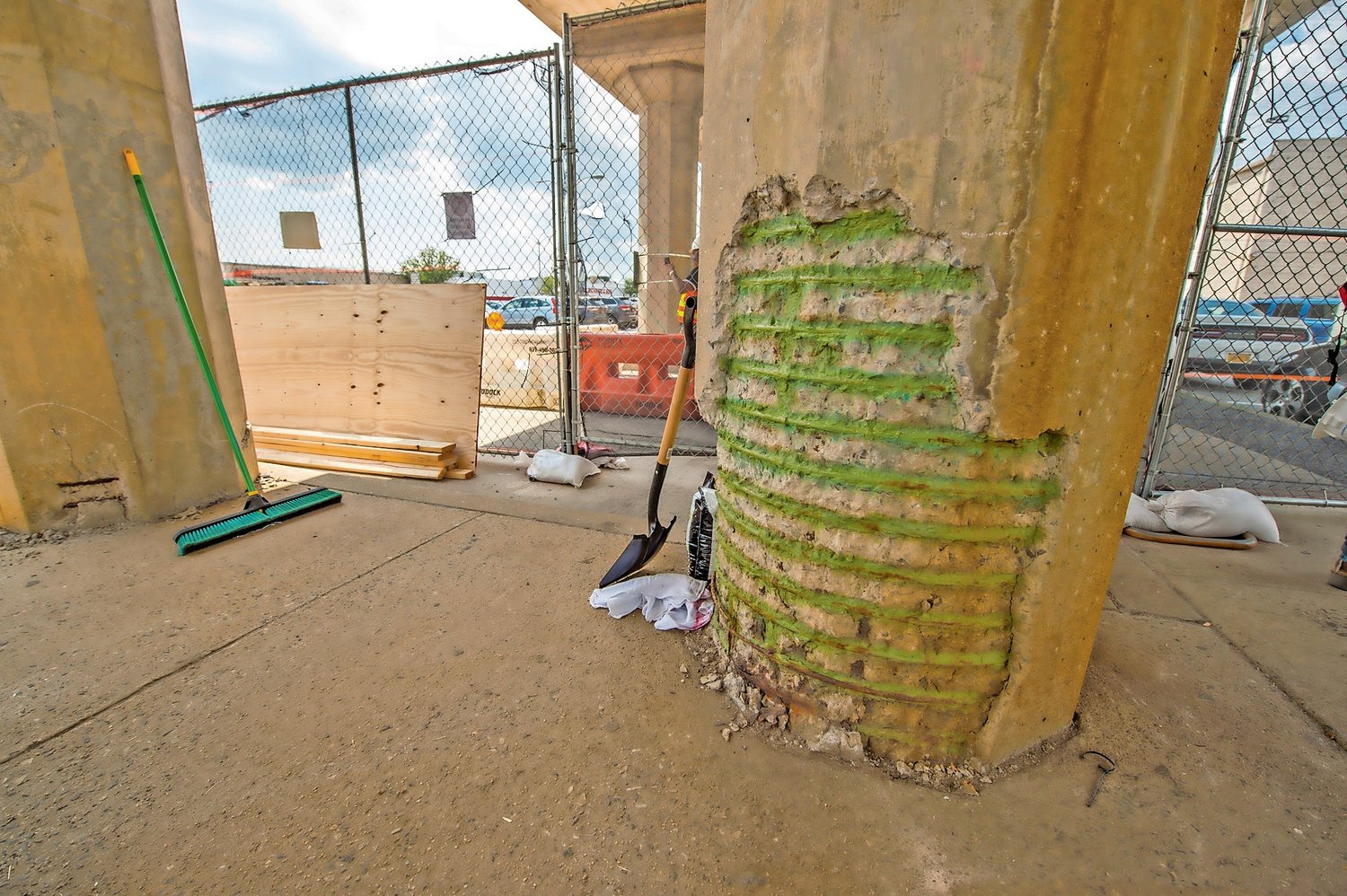Friday, April 19, 2024
 44.0°,
Mostly Cloudy
44.0°,
Mostly Cloudy
Repair of Rockville Centre LIRR viaduct is underway
Villagers and commuters on the Long Island Rail Road may notice large orange and white construction enclosures on the ground under the railroad. That’s because a rehabilitation project has begun to fix the railroad’s viaduct, the concrete structure that supports the tracks and platforms.
Construction began this summer, and will be complete by the end of 2020, said Meredith Daniels, a spokeswoman for the Metropolitan Transportation Authority. The $1.8 million project, funded by the MTA’s Capital Program, encompasses the stretch of LIRR line in Rockville Centre from Centre Avenue in the west to Mars Avenue in the east.
“The project enhances safety, as we’re talking about a concrete structure in need of repairs,” Daniels said. “Aesthetically, it will look better, adding to the customer experience LIRR riders deserve.”
The viaduct was built in 1941, when the tracks were raised. Workers will repair its concrete parapet walls and piers, and the concrete spalls and encasement on cap beams. The project includes improvements to the track bed, or understructure, drainage system, which will address drainage issues, as well as repairs to cracks on stems, back walls and wing walls.
The MTA is also repairing the LIRR viaduct in Lynbrook. “The goal is always to work with communities to address mutual needs and deliver projects that will give customers a rail system they de-serve,” LIRR President Phillip Eng said in a statement.
Mayor Francis X. Murray commended Eng at the September meeting of the village board of trustees for working with the village and responding to its needs. “The upgrading of our LIRR system is critical,” Murray said, “because so many of our residents depend on it each and every day.”
He invited Hector Garcia, the MTA’s senior director of external affairs, to speak about the project.
Garcia noted that MTA officials were working closely with the village to ensure that construction proceeds safely and smoothly. The work will affect about 10 parking spots at a time as construction progresses from west to east.
“Commuters aren’t going to feel the work too much until right by the station area,” Garcia said, “and at that point, there will be more coordination and communication so everyone knows what’s going on.”
HELP SUPPORT LOCAL JOURNALISM
The worldwide pandemic has threatened many of the businesses you rely on every day, but don’t let it take away your source for local news. Now more than ever, we need your help to ensure nothing but the best in hyperlocal community journalism comes straight to you. Consider supporting the Herald with a small donation. It can be a one-time, or a monthly contribution, to help ensure we’re here through this crisis. To donate or for more information, click here.
Sponsored content
Other items that may interest you











